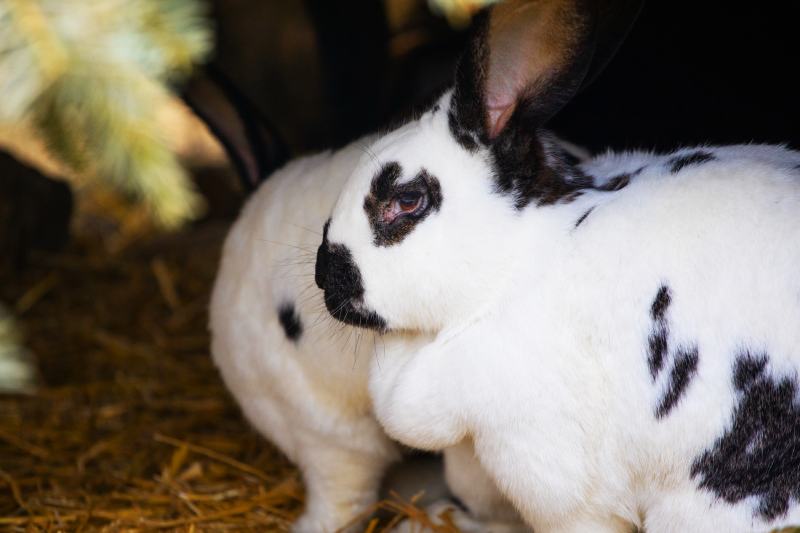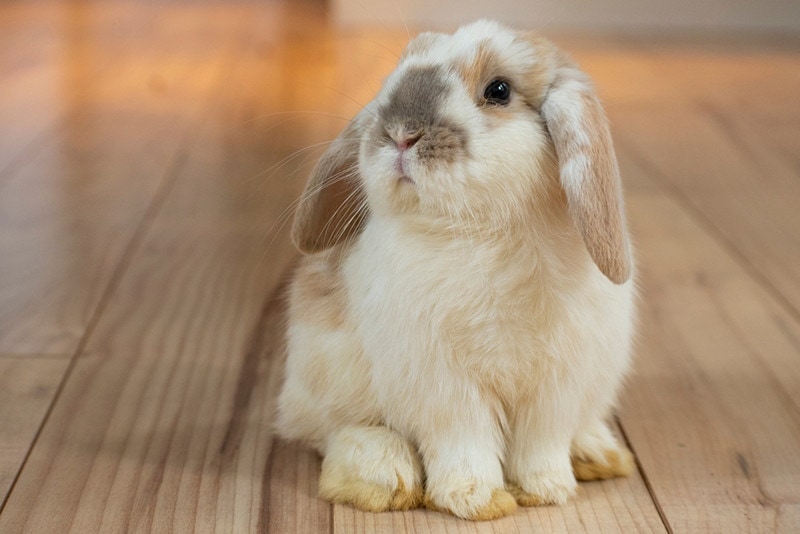Rabbit Pregnancy: A Complete Vet Reviewed Guide
Updated on
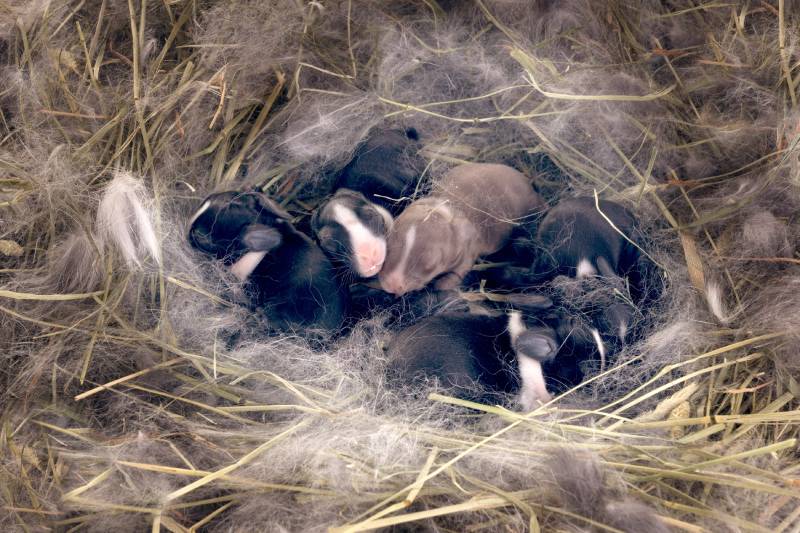
Click to Skip Ahead
Rabbits are well known for their ability to proliferate at an impressive rate. Their pregnancies are short, only lasting between 31 to 33 days, and the female can become pregnant again within hours of giving birth.
While the process may go by quickly, rabbit owners should know what to expect during their rabbit’s pregnancy, that way they are prepared to care for the female and understand what she’s going through during this time.
It’s not uncommon for owners to not realize their rabbit is pregnant until a couple of days before birth, but there are some signs that may indicate it ahead of time. Whether you’ve acquired an expecting mother rabbit, or your female has had access to a male, we’ll cover what you can expect when your rabbit is expecting.
Rabbit Pregnancy Stages:
Week 1
Even if you are aware that your female rabbit has been bred, pregnancy often isn’t obvious until much closer to birth. Within the first week of pregnancy, there typically aren’t any indicators that will stand out to an owner, though there is a lot going on inside the female’s body as the babies develop.
The most obvious sign of pregnancy would be a sexually mature adult female rabbit no longer showing interest in a male. Rabbits are receptive for a period of about 14 days per 16 days. A female that stops showing interest in a male after being housed together for about a week and has a dry, whitish-pink vulva is likely pregnant.
Veterinarians can use an ultrasound machine to detect a rabbit’s pregnancy as early as 7 days into gestation, though it’s recommended to wait until the 2-week mark since these examinations can be pricey and you want to ensure the imaging is accurate.
The mother rabbit should be provided with a nutritious, well-balanced diet that includes high quality hay, pellets, and appropriate servings of fresh leafy greens, vegetables, and some fruits. Pregnant and lactating females will benefit from increased protein, so you can make dietary adjustments as needed. Be sure to talk to your veterinarian about the proper diet for your pregnant rabbit, as too much of certain nutrients can be harmful.
The general guidelines for a pregnant rabbit are:
- Protein: 15%, of which 11% is digestible
- Fat: 2 to 3%
- Fiber: 14 to 16%
- Digestible Carbohydrates: 45 to 50%
Though pregnant rabbits require more calcium than those in maintenance, you should be very careful about how much calcium you provide them. It’s best to ask your veterinarian for a calcium supplement appropriate for your rabbit.
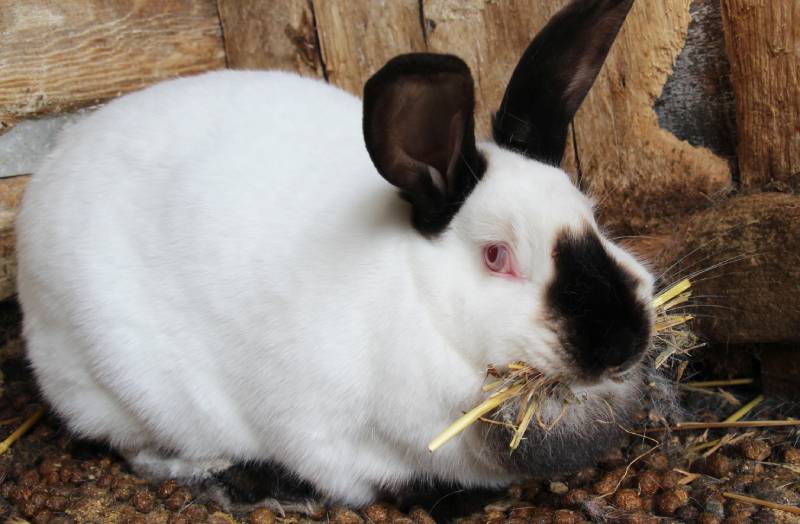
Week 2
During the second week of pregnancy, you may be able to palpate the abdomen and feel the small lumps that are baby rabbits in the making. This can typically be done between day 12 and day 14, but keep in mind that rabbits are very delicate and if you decide to feel their abdomen, do so lightly and gently.
Around the second week, the mother-to-be may also begin to show a change in behavior. Even the most loveable, handleable rabbits may try and avoid human contact and may even exhibit signs of aggression. She may even show aggression toward any cage mates.
It’s a good idea to not handle your pregnant mother rabbit, as you do not want to risk accidentally hurting her or her developing offspring and you most certainly don’t want to cause her any undue stress.
Week 3
Weight gain is not going to be as obvious in rabbits as it is for humans and other pregnant animals, but the mother will display obvious weight gain during this time. One thing that may stand out at any point during the pregnancy, but especially around the third week, is that her appetite may have increased substantially.
This is typical when a female is expecting, as her body needs additional nutrients to sustain the pregnancy and nourish the developing offspring. So, if you notice your female rabbit spending noticeably more time munching on hay, pellets, and her fresh foods, that’s completely normal during pregnancy.
One other sign you may notice around the third week is that she changes sleeping positions. Rather than looking like a precious furry loaf of bread, her growing abdomen may encourage her to sleep on her side. Some rabbits will naturally be side layers, but if a loafer suddenly starts sleeping on their side, it can be a sign of pregnancy.
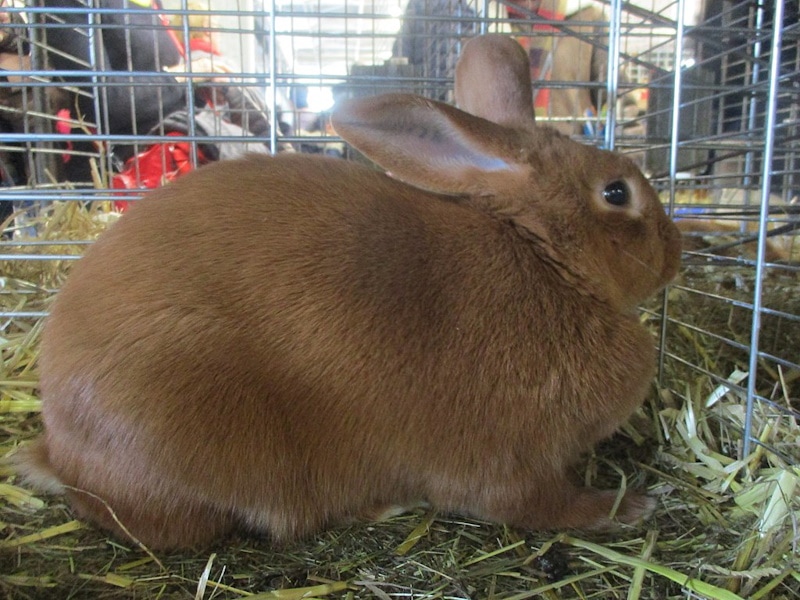
Week 4
With the typical gestation of a rabbit being approximately 31 days, the fourth week of pregnancy is when the most obvious signs of pregnancy will be noticed. Females will begin their nesting period, which often occurs a few days before birth.
Not only will you notice her building a nest (likely in a corner) by using hay and substrate within her enclosure, but she will also begin to pick out her own fur with her teeth to include in the nest. The fur provides the newborns with a softer resting place and helps keep them warm.
Nesting is associated with impending labor. Most females begin nesting 1 to 3 days before giving birth.
Labor and Birth
Once the female has created her nest complete with her own fur, you know the little ones will make their way into the world very soon. As labor begins, she will spend much more time in her nest.
The birthing process for rabbits is referred to as kindling, and kindling typically only takes 15 to 20 minutes and often happens in the middle of the night or early hours of the morning. Birthing complications are incredibly rare in rabbits and most often, owners will wake up to a brand-new litter of baby bunnies.
In the event of a complication, or if there are any questions or concerns regarding the birthing process, the owner should contact their veterinarian right away for assistance. Once the baby rabbits or kits have been born, it’s best to leave the mother and her babies alone for several days to avoid causing unnecessary stress.
Caring for a Litter of Rabbits
The average litter size for a rabbit is five to six kits, though there can be up to 14 in a single litter. They will be born blind, deaf, hairless, and will be completely reliant on their mother’s care. It’s advised to create a space in the enclosure where the female can get away from her young, as it’s normal for them to leave the nest for periods of time. Just make sure she has a comfortable resting place that still gives her full access to the kits.
Note that your rabbit might have more kits than teats, and you might have to foster some kits if this happens. Female rabbits can conceive hours after giving birth and, therefore, the male should not be allowed into her hutch while she’s caring for young.
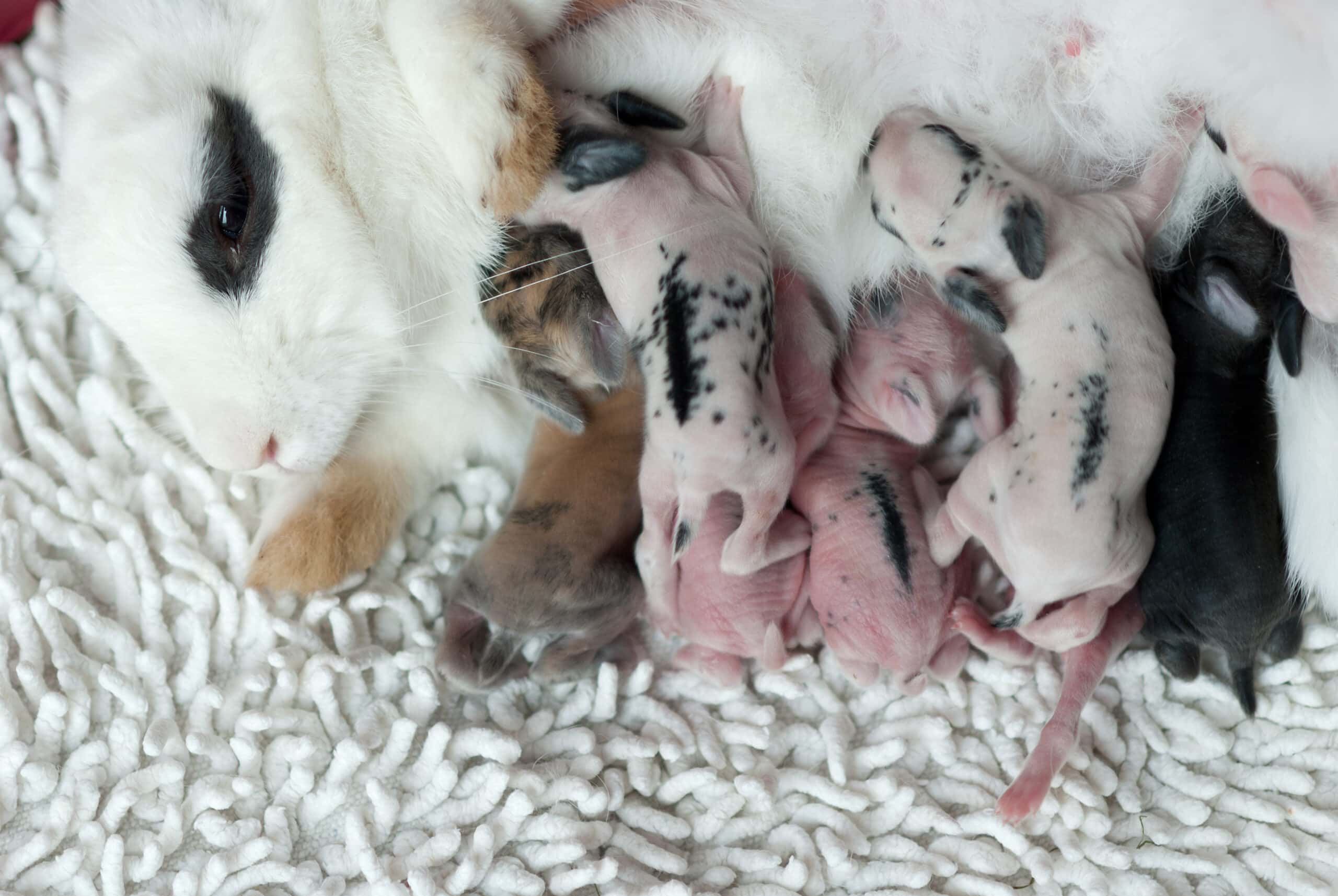
10–12 Days Old
Around the 10-day mark, the baby rabbits will begin developing distinct features and will start opening their eyes. This is an adorable stage where their fur and coat pattern and coloration begin to show.
12–18 Days Old
Between 12 and 18 days of age, the little ones will start venturing out of the nest to explore their new world. They are still fully reliant on their mother, so humans don’t need to do anything other than make sure the mother is provided with the proper diet and clean, fresh water.
19 Days–5 Weeks Old
Around day 19, give or take, the kits will begin nibbling on rabbit food. They will still be nursing at this point and are not yet ready to be weaned, but they will certainly begin eating more solid foods during this timeframe as nursing gradually decreases.
6–8 Weeks Old
Weaning typically occurs between 6 and 8 weeks of age. Some keepers recommend moving them to their own cage that is right beside their mother around this time to help with the transition, then begin separating them into their own cages, if possible, about a week later.
This is the time when they will be ready to go to their new homes or remain at the same home but separated from mom. Always make sure to feed them a well-balanced diet, as this is very important for their overall health and longevity.

The Importance of Spaying/Neutering Pet Rabbits
Having your pet rabbits spayed or neutered has numerous benefits. If you are not a breeder, it’s best to talk to your veterinarian about having this done as soon as possible. A female can become pregnant within hours of giving birth, so keeping her separate from male rabbits is a must, as she can give birth to several litters per year.
Benefits of Spaying/Neutering
- Eliminates the risk of unwanted litters.
- Eliminates the risk of reproductive cancers, especially for females, including mammary, uterine, and ovarian These cancers are very common in intact rabbits, with studies showing that females have up to a 80 percent chance of developing uterine cancer after 3 years of age.
- Increases the chances that your pet rabbit will be more friendly and affectionate towards humans.
- Increases the chance of success with litter training.
Conclusion
A rabbit’s pregnancy may be short-lived and often flows smoothly, but owners must be prepared to provide the mother rabbit with the proper diet to nourish the pregnancy and an enclosure where she can comfortably nest and have space to get away from her kits as needed. Owners should be well aware of proper handling protocols and care for both the mother and her young during this time.
Any questions or concerns regarding your pregnant rabbit should always be directed to your veterinarian. They would also be happy to discuss the benefits of spaying and neutering your rabbits and guide you on the best time to have this done.
Featured Image Credit: IrinaK, Shutterstock




